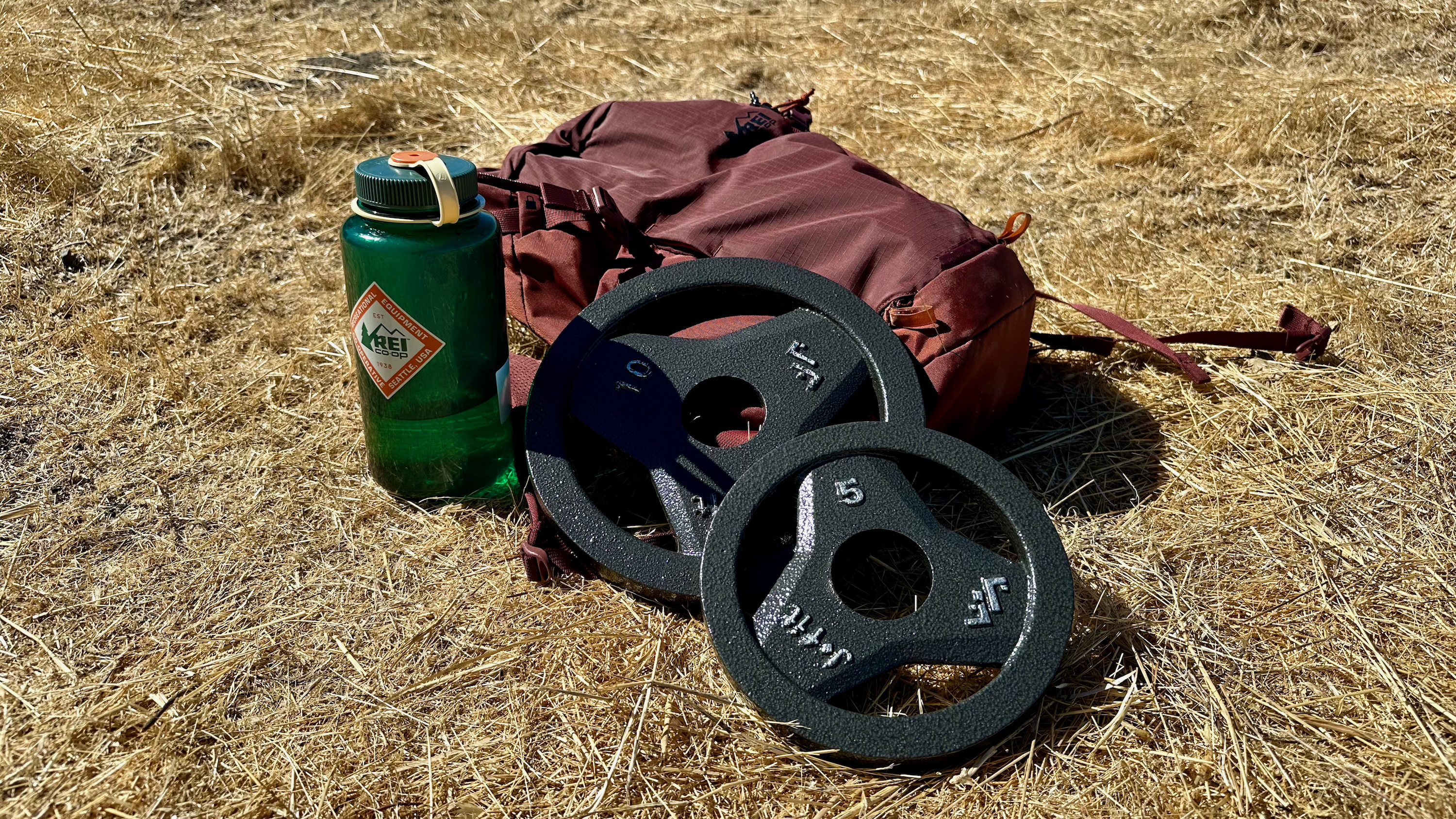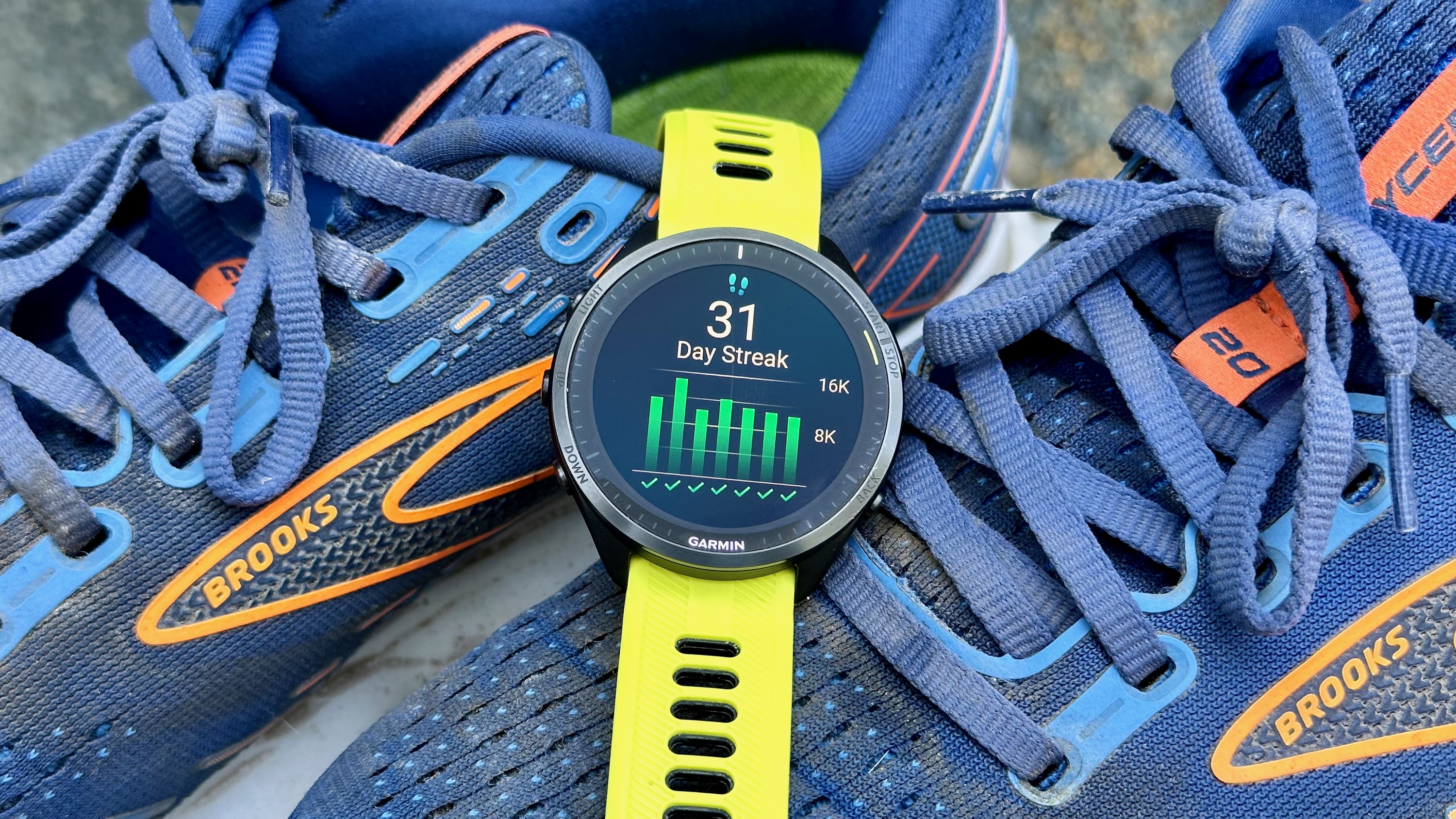I like rucking, but be careful before you go all-in on this popular workout fad
Before you spend upwards of $500 on a Goruck rucksack, weighted plates, hiking boots, and other tech, make sure you know what you're getting into.


In this weekly column, Android Central Wearables Editor Michael Hicks talks about the world of wearables, apps, and fitness tech related to running and health, in his quest to get faster and more fit.
To call rucking the hottest fitness trend of 2024 feels like an understatement. I've seen rucking write-ups across mainstream and tech blogs, all proclaiming how walking with a military backpack has massively improved their fitness within weeks (or even days) and that you "need" to try it yourself.
Seeing this unrestrained rucking enthusiasm from other sites refocused my angle for this column. Unfortunately, I need to temper people's expectations a bit.
The concept of rucking is simple: Walking has cardiovascular benefits, but if you put on a heavy rucksack, your heart will hit higher, fat-burning zones, your upper and lower body muscles will develop, and even your bone density will improve without taking that much extra time or being as high-impact as running.
I've rucked occasionally for the past two months, and I'd wholeheartedly recommend some people try it. Rucking makes me nostalgic for my Boy Scout days doing 50-mile hikes in the Sierra Nevadas — except I get to drive home and eat proper food afterward.
That said, too much rucking coverage exaggerates its positives and ignores its downsides. Not everyone needs to imitate military recruits to get healthier. So, let's dive into why I like rucking, and I want to make sure new converts to the cult of rucking don't have regrets later.
Light rucking is the perfect challenge for hikers and runners
The big hurdle for rucking is the upfront cost. Unlike my fellow journalists who probably got gifted or expensed Goruck packs, I had to decide whether to spend $300–400 on a proper rucksack with fancy support straps and designed pouches for weight plates, as r/Rucking users recommend, or use a "normal" backpack and risk straining my lower back.
Instead, I repurposed the 18L REI daypack I'd bought to carry water and trail mix. It's not rugged enough for true support or a ton of weight, but I could fit two 10-pound plates and a rolled-up towel behind them in the laptop sleeve so that the weight stayed close to my back and didn't bounce around as I trekked up and down steep hills.
Get the latest news from Android Central, your trusted companion in the world of Android

As a runner who's never been into strength training, I don't have much defined muscle, so entry-level rucking is perfect cross-training for me. It tricks me into enjoying a total-body workout by distracting me with nature and cardio, it gives my feet a break from runs, and it helps me get low-aerobic training load — aka prolonged time in heart rate zones 1 and 2 — for building up my VO2 Max foundation so I can push harder on my regular runs.
This Goruck beginner's guide recommends working your way up to 1/3 of your body weight, starting at 20 pounds and adding five extra pounds per week for short walks until you reach this goal. I'd recommend starting even lighter (maybe 10 pounds?), then stopping at around 20 pounds until you've rucked enough to justify shelling out for proper gear.
Don't ruck before you can walk
Without calling out any specific writers or sites, I've seen tons of headlines about rucking for "10,000 steps a day," or rucking every day for weeks, and having immediate benefits to strength, endurance, and mental health.
Look, I walked 10,000 steps a day for a month last year before I'd even heard of rucking. I lost weight, built up a higher VO2 Max for endurance, and felt much happier — though the walks did get boring after a while. Sound familiar, minus the strength training?

Switching from a sedentary writer's lifestyle to an active one feels great, whether or not you're wearing a backpack. Rucking will make you stronger, but you probably shouldn't do it daily unless you're already in shape and have decent core strength — and don't feel awkward wearing a military pack in the suburbs or on city streets.
Otherwise, most people should take care not to have false expectations, or to hurt themselves by overtraining. Rucking once or twice a week is more realistic to start, and if you're using heavier weights, you probably should only be walking 2,000 to 5,000 steps at first, not 10,000. You'll want to walk longer and rucksack-free on other days to sustain losing weight.
Rucking isn't some miracle workout
If you search "rucking calories," you'll see Gemini and marketing sites claiming that rucking burns 2.5–3x the calories you burn while walking, saving you time. Nope. I have no idea where they came up with that multiplier.
I hiked the same 10-mile hike with 2,250 feet of elevation gain, once with no pack and once with 25 pounds of pack weight. My first hike burned 1,081 calories (according to my Garmin Forerunner 965) with a 120 bpm HR average, 161 bpm max, and 2:38:06 total hike time; my second hike burned 1,541 calories with a 131 bpm HR average, 183 bpm max, and 2:57:10 hike time.
Why did I burn more calories? Carrying more weight required slightly more cardiovascular effort on flat ground, steep hills strained my heart more than they normally would, and the same distance took slightly longer to finish. Still, I only burned 42.5% more calories, not 200% more.
No doubt I'd burn even more calories with more weight, right? But only because it would stretch the hike longer; unless you're climbing tons of hills, the gap won't be that great, and more weight will just injure you. When I checked this article from a Navy Seal about rucking, he had a similar, reasonable estimate to my findings: a "40%-50%" caloric boost from a 50-pound pack for military folk better trained for extra weight.
So if you're only walking or rucking for 30 minutes, you might jump from 200 to 340 calories — not insignificant, but not a paradigm shift either.
Rucking is only 'safe' if you're careful and patient
There's this common idea that rucking is "safe" while running will destroy your joints and lead to injury. I can't deny that running can cause short- and long-term issues if you're not careful. But wearing an extra 30–50 pounds of weight for daily walks would put as much strain and compression on your unprepared joints and soft tissue over time, even if it's "low-impact."
The NIH found that ROTC cadets were at higher risk of bone stress injuries after a four-mile ruck "despite the cadets not feeling fatigued." Without proper core strength, the compressive strain on your spine from heavy weight can lead to long-term disc, muscular, and spinal issues, even with a supportive rucksack. And get ready for blisters, plantar fasciitis, and knee pain if you overdo it.
I'm not saying this will happen, especially if you build up your strength safely over time with a lighter pack. But if you're not in the best shape and using rucking as a cure-all to shave off weight, you're going to have problems. A simple test is to see whether you can do simple body-weight exercises like squats or lunges, with or without a rucksack, to see if your body is ready for even more strain.
If it isn't, try walking for a month first; you might be surprised at how many calories you burn from simple body weight. Then maybe you'll be ready to ruck.
My advice before you ruck
I apologize for being a Debbie Downer in this column. I really do enjoy rucking when I find the time, and I'm hoping that if I develop more core strength, I'll be able to justify buying a more official and supportive rucking pack and boost my weight load.
But I'd make that purchase knowing that rucking is a sideshow for me. It's an exciting challenge that gives long hikes more of an impact, but I can't hike more than once or twice a month without neglecting other parts of my life. And with or without a rucksack, walking just isn't as fun as running for me. Yes, I'm weird.
If you want to dive into rucking, here is my advice:
- Start with whatever backpack you have now, and use heavy objects like water bottles if you don't have gym plates; then buy the proper rucking pack.
- See if you have the inclination and patience to enjoy long walks, with or without a rucking pack. I recommend audiobooks or podcasts.
- Wear a fitness watch to track your body's progress in adapting to heavier weights.
- Don't irresponsibly weigh down your rucksack more than you can handle in the vain hope of seeing tripled caloric burn.
Just...hike! Give yourself the challenge of rucking — and all the associated costs — once you've graduated from the basics. Otherwise, that rucksack will just take up closet space and you'll be looking for the next weight-loss or workout fad.

Michael is Android Central's resident expert on wearables and fitness. Before joining Android Central, he freelanced for years at Techradar, Wareable, Windows Central, and Digital Trends. Channeling his love of running, he established himself as an expert on fitness watches, testing and reviewing models from Garmin, Fitbit, Samsung, Apple, COROS, Polar, Amazfit, Suunto, and more.
You must confirm your public display name before commenting
Please logout and then login again, you will then be prompted to enter your display name.

